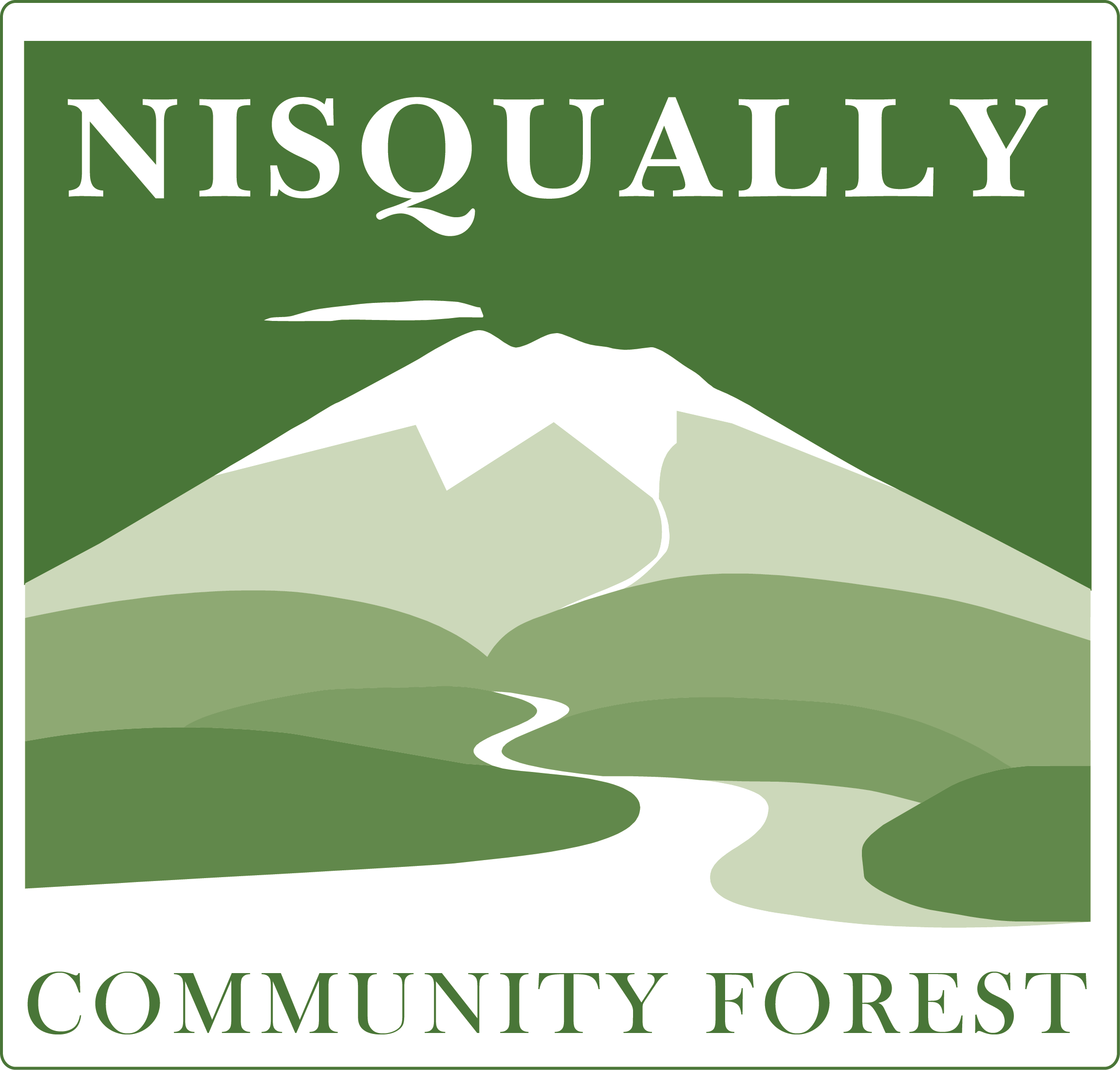The Nisqually Land Trust is initiating a planning project to produce a conceptual business model for a “Nisqually Community Forest” in the Upper Nisqually Watershed. The community forest would be owned by a municipal entity, nonprofit organization, or other such group on behalf of the Nisqually Watershed community and managed to provide multiple and sustainable benefits, including forest products, recreation, education, ecologically sustainable jobs, and environmental benefits such as clean water and protected wildlife habitat. The forest would likely encompass 20,000 to 30,000 acres.
The primary purpose of the planning project is to work through a process in which potential partners and stakeholders are brought together to begin to define the forest – its mission, goals, and values; how best to determine what lands it should encompass; how to create a management authority and secure financing; how to proceed to designing the forest and acquiring the lands necessary to build it.
The Nisqually Land Trust was established in 1989 to acquire and manage critical lands to permanently protect the water, wildlife, natural areas, and scenic vistas of the Nisqually River watershed. To date the Land Trust has conserved and restored over 3,500 acres in the watershed. A potential core holding of the envisioned Nisqually Community Forest is already in place, in the form of the Land Trust’s Mount Rainier Gateway Initiative, located near Ashford and the main entrance to Mount Rainier National Park. The Initiative currently includes some two thousand acres of permanently protected wildlife habitat and is likely to grow by another six hundred to one thousand acres by 2012. The Initiative has enjoyed widespread support from local stakeholders, private timberland owners, and county, state, tribal, and federal partners, who together have helped raise $10.6 million for habitat acquisition over the past four years.
This network represents a natural foundation upon which to build a community forest. It also suggests that the community-forest idea is an idea whose time has come in the Nisqually Watershed, which has a reputation for cooperative conservation and innovative conservation strategies. At the national level, the 2008 Farm Bill created the U.S. Forest Service’s Community Forest Program, which will fund acquisition of lands for community forests. As well, several national conservation organizations, including the Trust for Public Land and the Conservation Fund, have made community forests a mission priority and have developed programs to support their creation at the local level.
Application for National Park Service Planning Assistance
The Nisqually Land Trust Board of Directors believes the idea for a community forest in the Nisqually Watershed is ready to evolve from a topic of informal conversation to one explored through a more structured framework. The Board directed its Executive Director (Joe Kane) to apply for a grant of planning assistance from the Rivers, Trails, and Conservation Assistance (RTCA) program of the National Park Service, which provides non-financial grants of technical planning assistance to communities working on local conservation and recreation projects. Assisting local communities achieve their conservation and recreation goals is one way the National Park Service achieves its mission of extending the benefits of conservation and recreation to the nation and world.
Project Description
The grant request was approved in November, 2010, and a core Planning Team and a larger Advisory Committee have been created, and they have been working with the National Park Service since then to define the project through a planning process. As currently envisioned, the “conceptual planning” stage will run through December 2012 and include the following components:
- Form a planning team and an advisory committee to help guide the planning process.
- Issue a press release and a newsletter to announce the project to the general public.
- Convene a public forum to help identify stakeholders and issues
- Prepare a “Vision and Goals” document.
- Inventory and document local forest resources.
- Research existing community forest models.
- Identify potential forest products and services.
- Describe opportunities for income.
- Describe management and operational needs and issues.
- Develop an organizational structure and financial plan.
- Convene a public meeting to summarize findings to date and solicit public input.
- Draft a full planning document.
- Convene a public meeting to release draft plan for formal public review.
- Prepare final plan (last edits).
- Layout and print final plan.
- Distribute copies to all interested stakeholders.
- Celebrate success!
- In 2013, the Project will create formal business and financing plans and an ownership entity, with a goal of executing the first land acquisition for a community forest in 2014.
